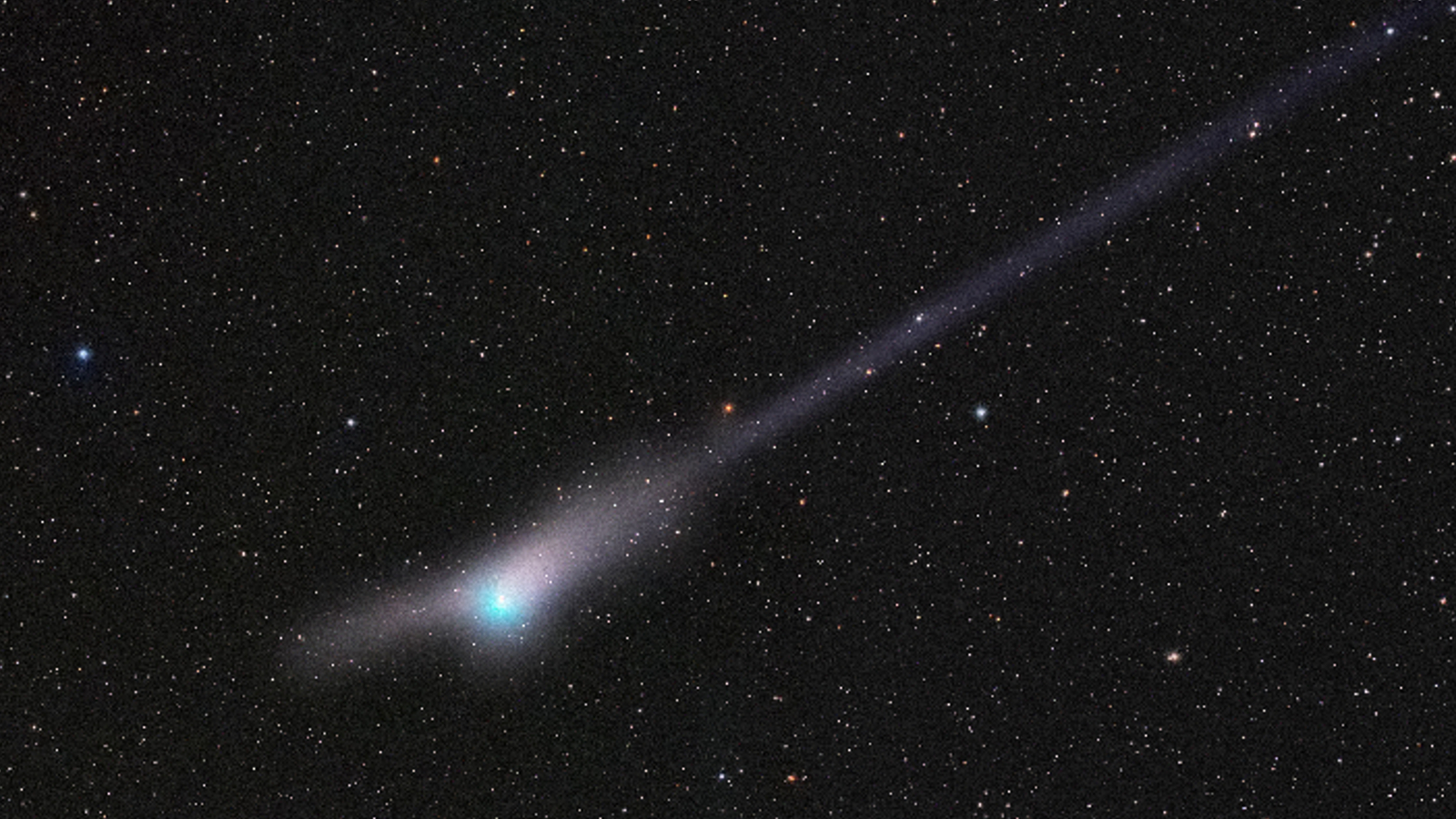You have one last chance to view the green comet this week, thanks to a close flyby with Mars
The green comet C/2022 E3, last seen 50,000 years ago, will zoom past Mars this week. This could be humanity’s last chance to see the comet up close.

A rare green comet zipping by Earth for the first time since the Stone Age is about to pass right next to Mars this week, and the once-in-a-lifetime cosmic pairing could be visible through a simple pair of binoculars.
The comet, called C/2022 E3 (ZTF), will appear as a faint, fan-shaped smudge next to the Red Planet as it passes between the orbits of Earth and Mars on the evenings of Friday (Feb.10) and Saturday (Feb.11), according to EarthSky.org.
This will be our last big chance to spot the cosmic iceball before it zooms away at around 128,500 mph (207,000 km/h) on its highly-elliptical, 50,000 year path around the sun.
Related: Optical illusion gives rare green comet an ‘anti-tail’ that seemingly defies physics
Comets of this type have two tails: one made from dust blown off by the solar wind, and the other composed of gas, which trickles behind the frozen ice clumps that make up the comet’s body as they are heated by the sun’s radiation. The green comet, which was first discovered in March 2022 by astronomers at the Zwicky Transient Facility in California, owes its unusual viridescent glow to the diatomic carbon shed in its wake — a type of carbon molecule that absorbs light from the sun before emitting it as a fluorescent green tail.
To spot the comet as it passes Mars, viewers in the northern hemisphere should face west after the sun has set and locate Mars as an orange point of light to the right of the Orion constellation. The comet should be just one degree above the planet next to the Auriga constellation, and can be located with a pair of binoculars or, if it is too faint, a small telescope.
If you can’t spot the comet immediately, allow your eyes to adjust and zero in on its location using stargazing apps or with the skywatching website The Sky Live. If you live in the Southern Hemisphere or can’t get to a location with clear skies, you can still watch the comet pass by tuning into the Virtual Telescope Project's livestream, which will begin at 6pm EST on Feb.11.
Get the world’s most fascinating discoveries delivered straight to your inbox.
The last time the comet was visible from Earth was when modern humans and Neanderthals coexisted, and it may not ever be seen again. The comet is not bound to our solar system, and is predicted to leave it forever unless its orbit is altered by the gravity of some unknown deep-space object to bring it back around. Even then, it could be millions of years before C/2022 E3 (ZTF) returns to Earth.

Ben Turner is a U.K. based writer and editor at Live Science. He covers physics and astronomy, tech and climate change. He graduated from University College London with a degree in particle physics before training as a journalist. When he's not writing, Ben enjoys reading literature, playing the guitar and embarrassing himself with chess.


